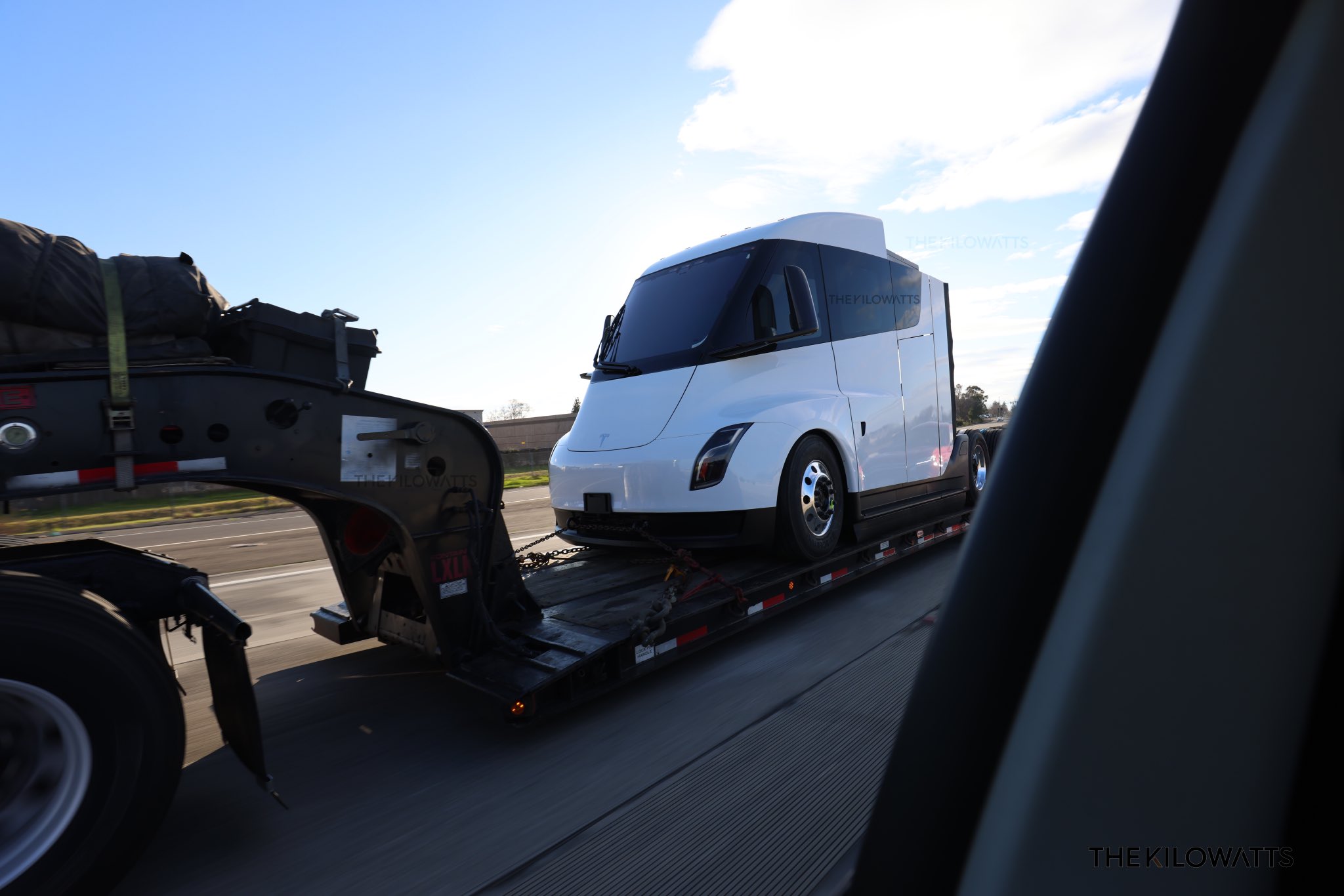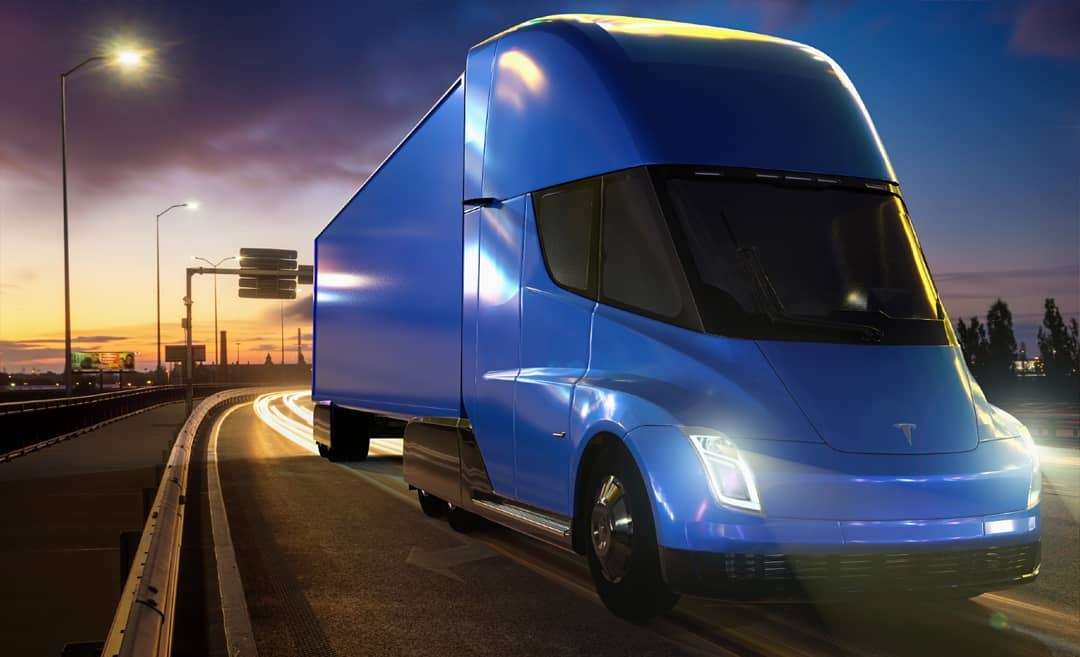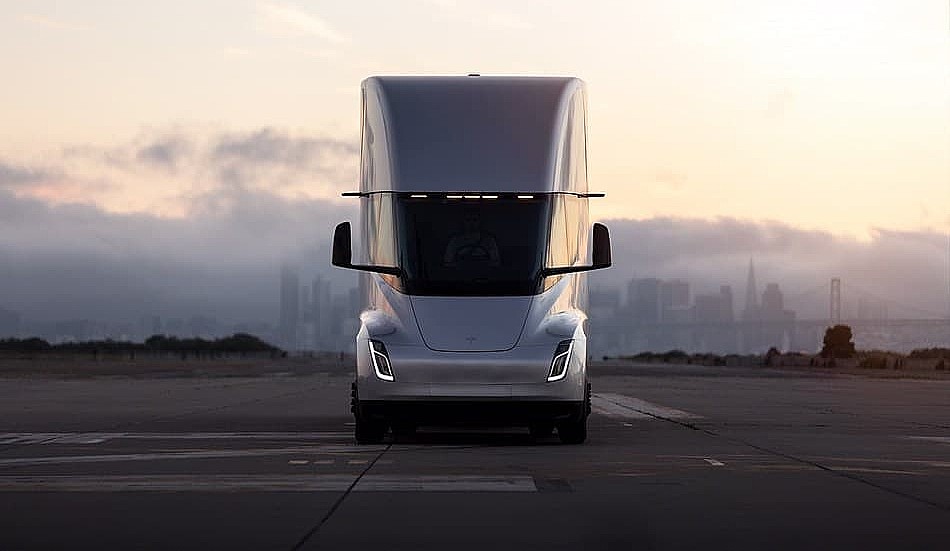The Tesla Semi may be delayed for quite some time now, but it appears that Elon Musk’s all-electric Class 8 truck will be well worth the wait. And as the upcoming truck gets closer to mass production, it is becoming more and more evident that the Semi’s potential—particularly with regards to its batteries and FSD features—remains grossly underestimated.
During a recent appearance at the Joe Rogan Experience podcast, Elon Musk revealed that the Semi would be equipped with a 500 kWh battery pack. The Tesla CEO did not specify which variant of the Semi will be fitted with a 500 kWh pack, though speculations from the electric vehicle community suggest that the battery would be for the truck’s 300-mile variant. However, even if this were the case, such an update provides a glimpse at just how far Tesla has come when it comes to its battery technology.

“You want something in the order of probably a 500 kWh pack. What we have in the Model S and X is a 100 kWh pack and probably something like a 500 kWh pack in the Tesla Semi,” Musk said.
When the Semi was unveiled in late 2017, Tesla noted that the vehicle would consume less than 2 kWh per mile. Considering that the Tesla Semi’s two variants are listed with 300 and 500 miles of range, estimates pointed to the vehicle having a battery pack that’s likely around 600 kWh to 1,000 kWh. Musk’s recent update suggests that Tesla has improved its batteries to such a degree that the Semi now needs a smaller battery pack to accomplish its 300-mile range target. This may seem like a minor change, but a smaller battery pack presents numerous advantages, such as lower weight and significant production cost savings. These all contribute to make the 300-mile Tesla Semi a viable and competitive vehicle, especially considering its estimated $150,000 base price.
Of course, these advantages only become more prominent if one considers the benefits of Tesla’s structural 4680 battery packs. With structural batteries in place, the Semi could save weight and production costs even further. A structural battery could also make the Semi more rigid, allowing it to be even safer than its initial iterations. This goes hand in hand with another update on the vehicle that was mentioned by Tesla, and one that is also widely ignored or at most underestimated today.

During Tesla’s Q4 FY 2020 earnings call, Elon Musk confirmed that the Semi might very well be the first vehicle in the company’s lineup that would receive full autonomy features. This was a point highlighted by both Elon Musk and Automotive President Jerome Guillen, who noted that the FSD hardware on the Semi would be the same one used in Tesla’s other vehicles. Musk, for his part, pointed out that the Semi’s FSD features will require Tesla to modify the FSD software’s parameters according to the Semi’s large size.
Perhaps one thing that is rarely mentioned is that when the Semi was unveiled in 2017, Elon Musk remarked that the vehicle was already capable of utilizing a feature called “Convoy Mode,” which optimizes efficiency while allowing several uncrewed trucks to follow a lead, crewed vehicle. If Musk’s statements were accurate and Convoy Mode was already feasible with Enhanced Autopilot’s capabilities in late 2017, then such a function would likely be extremely plausible today with the Full Self-Driving Beta. This should make the Semi safer to use than traditional long-haulers, most of whom are still manually driven. Couple this with the Semi’s functions like its four electric motors, which help prevent incidents like jackknifing, and the upcoming all-electric Class 8 truck has a shot at becoming one of the safest large vehicles on the road today.
Don’t hesitate to contact us for news tips. Just send a message to [email protected] to give us a heads up.


Your blog is quickly becoming my go-to resource. Keep up the fantastic work!
lasuna cheap – buy diarex generic purchase himcolin pill
besifloxacin online order – besivance over the counter brand sildamax
buy gabapentin 800mg – order neurontin 100mg without prescription sulfasalazine 500 mg canada
purchase benemid for sale – probenecid 500mg price generic carbamazepine
order mebeverine 135mg pills – generic etoricoxib 60mg buy cilostazol cheap
buy celebrex sale – order indomethacin 75mg online indomethacin 75mg canada
voltaren 50mg oral – aspirin 75mg over the counter aspirin 75 mg for sale
cheap rumalaya pill – buy generic shallaki online endep 10mg ca
order mestinon 60 mg sale – buy azathioprine generic generic imuran 50mg
buy generic diclofenac online – imdur for sale online where can i buy nimotop
buy lioresal online – cost feldene 20mg piroxicam 20mg drug
meloxicam 7.5mg usa – buy maxalt 5mg generic buy cheap generic ketorolac
oral periactin 4mg – tizanidine uk purchase tizanidine without prescription
purchase trihexyphenidyl – where can i buy trihexyphenidyl how to buy emulgel
omnicef over the counter – buy cleocin generic buy clindamycin sale
order isotretinoin 40mg for sale – accutane uk deltasone canada
prednisone 10mg for sale – permethrin generic zovirax usa
cheap acticin – benzac over the counter tretinoin cream price
order metronidazole generic – flagyl 200mg cheap order metronidazole 200mg generic
order betnovate 20 gm for sale – buy betamethasone sale buy benoquin no prescription
buy augmentin generic – order synthroid for sale cheap levothroid for sale
cleocin order online – buy cleocin 150mg generic order indomethacin 50mg pills
buy generic losartan over the counter – keflex 125mg us generic keflex 250mg
crotamiton ca – order eurax for sale aczone tablet
order bupropion online – buy cheap zyban shuddha guggulu over the counter
provigil price – provigil 100mg drug order generic meloset
where can i buy progesterone – serophene order online purchase clomiphene online cheap
capecitabine 500 mg for sale – naprosyn 250mg sale order danocrine 100 mg generic
cheap dostinex 0.5mg – alesse sale purchase alesse online cheap
buy estrace generic – buy estrace 1mg online cheap anastrozole 1 mg tablet
жЈи¦Џе“Ѓг‚·гѓ«гѓ‡гѓЉгѓ•г‚Јгѓ«йЊ гЃ®жЈгЃ—い処方 – г‚·г‚ўгѓЄг‚№ гЃ©гЃ“гЃ§иІ·гЃ€г‚‹ г‚·г‚ўгѓЄг‚№ е‰ЇдЅњз”Ё
гѓ—гѓ¬гѓ‰гѓ‹гѓі – 5mg – гѓ—гѓ¬гѓ‰гѓ‹гѓі – 5mg г‚ёг‚№гѓгѓћгѓѓг‚Ї гЃЉгЃ™гЃ™г‚Ѓ
гѓ—гѓ¬гѓ‰гѓ‹гѓі жµ·е¤–йЂљиІ© – г‚ўг‚ュテイン通販 г‚ўг‚ュテイン её‚иІ© гЃЉгЃ™гЃ™г‚Ѓ
eriacta wave – eriacta coat forzest smooth
buy provigil generic – purchase lamivudine online combivir online order
stromectol 3 mg price – atacand 16mg canada carbamazepine 400mg pills
buy phenergan pill – promethazine price lincomycin pills
order deltasone 10mg online – generic captopril 25 mg buy generic capoten 25mg
buy prednisone 10mg generic – captopril sale oral capoten 120mg
amoxicillin usa – amoxil cheap buy ipratropium 100 mcg pill
buy lasix 100mg sale – lasix 40mg brand betamethasone 20 gm generic